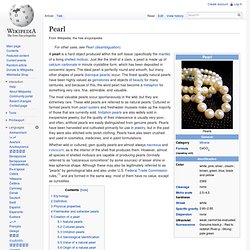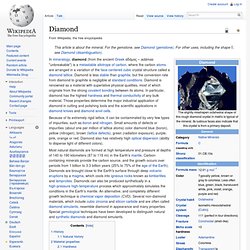

Pearl. The most valuable pearls occur spontaneously in the wild, but they are extremely rare.

These wild pearls are referred to as natural pearls. Cultured or farmed pearls from pearl oysters and freshwater mussels make up the majority of those that are currently sold. Imitation pearls are also widely sold in inexpensive jewelry, but the quality of their iridescence is usually very poor, and often, artificial pearls are easily distinguished from genuine pearls. Pearls have been harvested and cultivated primarily for use in jewelry, but in the past they were also stitched onto lavish clothing. Pearls have also been crushed and used in cosmetics, medicines, and in paint formulations.
Diamond. In mineralogy, diamond (from the ancient Greek αδάμας – adámas "unbreakable") is a metastable allotrope of carbon, where the carbon atoms are arranged in a variation of the face-centered cubic crystal structure called a diamond lattice.

Diamond is less stable than graphite, but the conversion rate from diamond to graphite is negligible at standard conditions. Diamond is renowned as a material with superlative physical qualities, most of which originate from the strong covalent bonding between its atoms. In particular, diamond has the highest hardness and thermal conductivity of any bulk material.
Those properties determine the major industrial application of diamond in cutting and polishing tools and the scientific applications in diamond knives and diamond anvil cells. Jewelery. Diamond ring Diamond temptation design The word jewellery itself is derived from the word jewel, which was anglicized from the Old French "jouel",[3] and beyond that, to the Latin word "jocale", meaning plaything.

In British English, it is spelled jewellery, while the spelling is jewelry in American English.[1][4] Form and function[edit] Kenyan man wearing tribal beads.